ATC Model SCM 19 loudspeaker
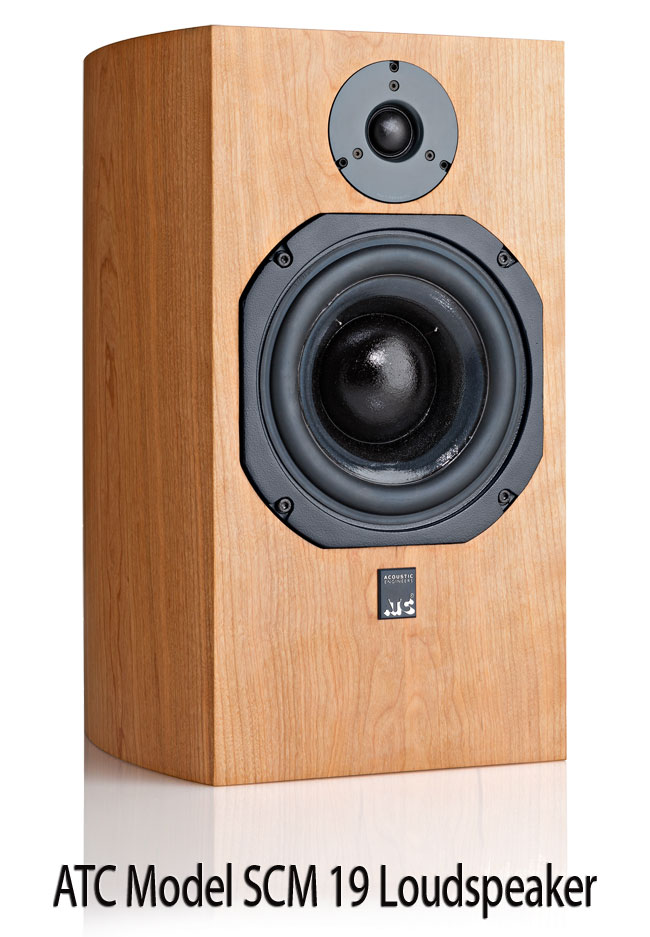

For those of you who don’t know Acoustic Transducer Company, better known as ATC, is an old loudspeaker company that has been around for about for nearly forty-years. Best known for their powered monitor loudspeakers – widely used in the industry – they have been producing home versions, both passive and actively powered, for nearly as long.
The ATC SCM 19 is a conventional 2-way loudspeaker with a mid-range/woofer and a soft dome tweeter that retails for a rather affordable $4299.00 per pair. The enclosure is only unusual as it is, in an Thiel/Small ported era, a sealed MDF box about 17 ¼” by 10 ½” at the front and 7” wide at the rear due to its curved sides which have been popular lately (probably not acoustic suspension, but that’s another tale). The ATC SCM 19 measures about 11 ¾” deep and weighs a substantial 39 pounds primarily due to a very impressive main driver. These specs are fairly standard in terms of a description for any small loudspeaker. But, ‘God is in the details’, as the great architect, Mies van de Rohe once said.
I became good friends for decades with Bud Fried (Irving M Fried of IMF and Fried loudspeakers) after purchasing a set of IMF Studio 2 speakers decades ago. Fried once wrote an article called ‘ Reviewing the Reviewers’ where he argued that an audio review is as much a review of the reviewer as it is of the product. I believe he was correct. You can’t really understand a review until you can sort of see it through the reviewer’s eyes. That’s as true for me as it is for any reviewer. My attempt to review myself, to explain my biases, is in the next few paragraphs.
Sounding live is of primary importance to me. Most systems don’t do it for me. What does live mean for me? Have you ever been outside a room with live music playing inside? You can always tell that it’s live sound. The same is true of good reproduced sound. You can sense that it’s good from outside the room. Obviously whatever sonic factors are responsible for this, it’s not the classic factors cited in sonic criticism, such as flat response, imaging depth, etc. So what do I believe is going on?
Decades ago I remember Bud Fried using the term, dynamic linearity, It took me a long time to understand what he meant. Like many of us I thought he meant the ability to play loud cleanly.
A few years later I was in a room at the Chicago CES show where David Berning (of Berning amplifier fame: very special amps) and my good friend Murray Zeligman (a relatively unknown but very talented audio designer of all kinds of gear) listening to David’s Audionics BA 150 amp. The amp had variable negative feedback which would vary harmonic distortion, IM distortion and damping factor (which in this amp with low damping would affect frequency response). And as the these factors got worse, the sound kept improving causing me to ask if either man knew any measurement that correlated with what I heard, expecting a negative reply. To my surprise(and relief), both replied positively, both citing linearity. They defined this as if 1 volt in produces 2 volts out, a device that produces 4 volts from 2 volts in will sound better. You can define linearity in a speaker similarly.
It took me a few years to put the two events together. Dynamic linearity is linear changes in output versus input, whether it’s a small or medium or very large change. It’s not just being able to play loudly. And it’s important that linearity is maintained at all frequencies. Systems and especially speakers vary greatly in their ability to do this. That’s what I believe is primarily involved in ‘live’ sound.
I also demand tight bass and especially well-controlled midbass for a loudspeaker to be rated highly. I deplore the sound of overhang, a driver ringing after the signal has stopped, anywhere in the spectrum but particularly in the mid bass where it colors the sound for an octave or two above where it occurs. Stop and think. If overhang happens it effectively makes a higher noise floor for the signal immediately following reducing the dynamic change and blurring the newer signal.
This is not to minimize at all the other factors commonly used to describe sound. A good speaker will aspire to all of them, flat response, all the spatial characteristics, etc. But for me they enhance the sense of reality; they are not fundamental to it.
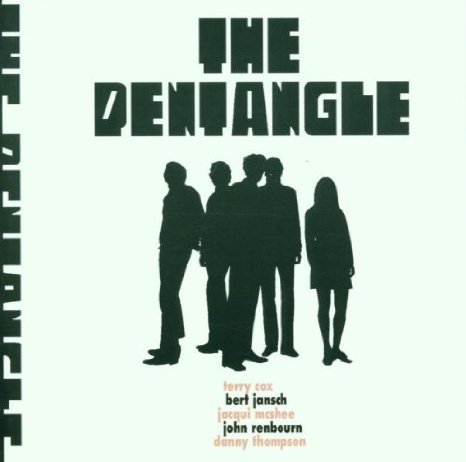 I almost always begin my listening with two CDs, The Pentangle (Castle 06076 81120-2) and Evgeny Kissin playing the piano version of Pictures at an Exhibition(RCA BG2 63884). The Pentangle has excellent mini and mid dynamics. It’s totally acoustic with two guitars, drums, an upright bass and a wonderful female lead singer. The guitars are great for reproduction of upper frequency decay. And the drums are a fine test of mid bass overhang control. The Kissin recording is one of the better examples of the massive dynamics of a piano and everything in between. I believe it’s better to use acoustic music to hear dynamic linearity, the reason for my use of these two CDs. Most rock is designed for car radios and the dynamics are compressed to keep the level high enough to play above car noise. And, just for trivia’s sake, The Pentangle was the first non-classical LP reviewed in Stereophile.
I almost always begin my listening with two CDs, The Pentangle (Castle 06076 81120-2) and Evgeny Kissin playing the piano version of Pictures at an Exhibition(RCA BG2 63884). The Pentangle has excellent mini and mid dynamics. It’s totally acoustic with two guitars, drums, an upright bass and a wonderful female lead singer. The guitars are great for reproduction of upper frequency decay. And the drums are a fine test of mid bass overhang control. The Kissin recording is one of the better examples of the massive dynamics of a piano and everything in between. I believe it’s better to use acoustic music to hear dynamic linearity, the reason for my use of these two CDs. Most rock is designed for car radios and the dynamics are compressed to keep the level high enough to play above car noise. And, just for trivia’s sake, The Pentangle was the first non-classical LP reviewed in Stereophile.
My system consists of an updated VPI Hw 19 with Fidelity Research FR-64fx arm and Technics EPC 100 MK4 pickup (perhaps the best MM cartridge ever?) and Avid Pulsus phono stage. The CD source is a Pioneer DVD 563A running through two Monarchy anti jitter boxes into a George Mark Audio DAC/line stage. My amp is a Sunfire 300 and the speakers are SEAS Froy 3 kits(designed by my friend Murray Zeligman) with 18” woofers also designed by Murray for the Froys with a dedicated passive crossover (at 85 Hz). Of course, I didn’t use the woofers as a reference in this case.
 ATC is an engineering company. By this I mean they design using engineering principles and then they listen to be sure they’ve got it right. They don’t design for musicality (a word I hate) or for a particular type of sound. They listen as another tool not as a primary device. And, for what it’s worth, I’m of the same ilk. There are things that can be measured and I don’t believe in ignoring them just because it doesn’t sound the way I want. The ear, even a Golden Ear has flaws. If we were at the point in time when we could define reproduction with numbers and graphs I’d be happy. For now the best results come from intelligent use of engineering and good ears.
ATC is an engineering company. By this I mean they design using engineering principles and then they listen to be sure they’ve got it right. They don’t design for musicality (a word I hate) or for a particular type of sound. They listen as another tool not as a primary device. And, for what it’s worth, I’m of the same ilk. There are things that can be measured and I don’t believe in ignoring them just because it doesn’t sound the way I want. The ear, even a Golden Ear has flaws. If we were at the point in time when we could define reproduction with numbers and graphs I’d be happy. For now the best results come from intelligent use of engineering and good ears.
Nowhere is ATC’s approach more evident to me than in some of their specs. They list their main driver as a 6 ½” unit. Convention is that dimension is from the outside of the frame to the opposite side. But the driver looked larger than that to me. I measured it. The frame is 8” across and the 6 ½” dimension is the distance from the outside of the surround to the outside of the surround. ATC could advertise an 8 inch driver if they chose to.
ATC lists the bass response as 6 dB down at 55 Hz. At first that sounds like lean bass. I can tell you it doesn’t sound that way. But that’s engineering honesty rather than smart advertising publishing real numbers rather than listing it as extending to at least 45 Hz without including how far down it was.
By the way if you want to feel good about a four grand investment in the ATC SM 19, one look at this driver and you’ll feel great. The frame is a thick casting and the magnet is huge (albeit not the venerable oversized magnet I just saw in an ad today). There is no such thing as an oversized magnet in a woofer. An oversized magnet reduces bass by over damping a driver. You need the correct magnet for the enclosure and response being designed for. Too big is as bad as too small. It’s just a different type of bad.
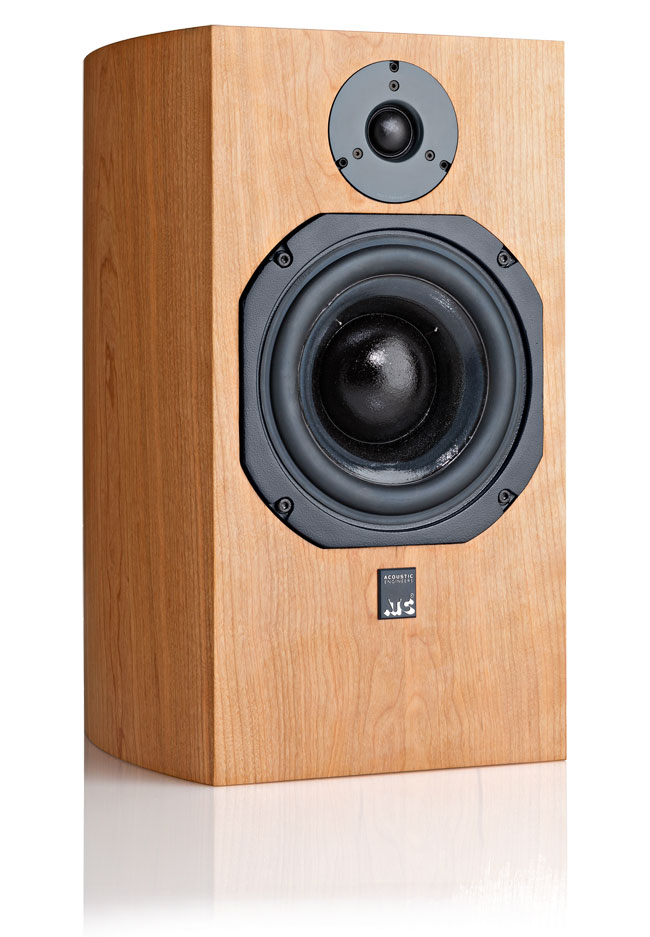
Now to ‘God is in the details’. It’s what makes ATC different from many other speakers. First and most importantly they use an Underhung voice coil where the height of the voice coil is shorter than the height of the top plate gap. Most drivers are overhung with the coil longer than the gap (Rockport, Magico and Acoustic Zen are among the few speakers I know that also use Underhung drivers). Underhung drivers are more linear (a word I started using in the beginning of this review) because the magnetic lines of force are spaced more linearly in the center of the gap. They are less linear at the top and bottom where they fray. Magnetic linearity equals superior reproduction linearity. The trade off is (there’s always a trade off) lower efficiency (the voice coil only uses part of the magnetic power) and cost. By the way, interestingly, most tweeters are underhung.
As a driver moves it causes variations in the magnetic structure in the top plate and therefore in the voice coil gap. This is obviously not good, variability of the magnetic lines in the gap is a non-linearity. Terms used are eddy currents and hysteresis, sort of inertia in the magnetic structure returning to full strength as it varies. ATC has developed a material called SLMM that they use to line the gap. SLMM has much lower hysteresis than normal top plate steel reducing hysteresis. ATC claims 10 to 15 dB less third harmonic distortion from about 100 Hz to 3 kHz.
ATC uses ‘conventional’ materials for their drivers, paper for the cones and fabric for the domes. All driver materials vibrate on their surfaces when driven including harder materials such as metal and even diamond. The main difference is at what frequencies and how badly they breakup. Ideally there should be no break up. Paper breaks up at lower frequencies than hard materials but it doesn’t resonate as badly and tends to stop more quickly than harder driver materials since it has more internal damping. As usual everything is a trade off. ATC has done something clever to make their cones stop ringing even more quickly. Their cones are two paper layers with a glue between that never gets totally hard. The layers ‘rub’ together and turn the breakup into heat reducing the duration of the break up. This is known as constrained layer damping, a technique sometimes used in enclosure construction. ATC claims significantly reduced harmonic distortion from 300 Hz to 3 kHz and extended useable bandwidth over conventional single layer cones.
ATC also says that the constrained layer damping causes the outer edges of the cone to stop moving at higher frequencies, to sort of become part of the suspension, and the area of non-movement increases as the frequency increases decreasing the effective driver diameter. This improves dispersion, which is primarily an inverse function of the effective driver diameter. It also aids the transition to the smaller, therefore wider dispersion tweeter, at crossover making it simpler to hide this transition. The crossover points on some speakers are too sonically obvious sometimes. This is largely caused by the wider tweeter dispersion at crossover.
The ATC SCM19 is a closed box speaker, that is there is no port open to the outside. At one time closed boxes dominated the audio universe. Now the reverse is true. There are multiple reasons for this but basically there are two. First the -3 dB point for a reflex box tends to occur at a lower frequency. Secondly ported boxes are more efficient. But it’s not all win win for reflex speakers. Closed boxes roll off at only 12 dB/octave while vented boxes roll off at 24 dB/octave and remember dB is a logarithmic function, not a linear one. You can hear bass, albeit reduced at lower frequencies further down sometimes in a closed box since below resonance there is a point where the closed box is louder than the ported one. And more importantly closed box bass is tighter, better defined. Yes there are some very good reflex boxes but ultimately they can never be as tight as a good closed box. Vented boxes ring for at least ½ cycle more.
The ATC SCM 19 is designed to what is called maximally flat (Q = 0.707). There are tighter alignments of closed box but they tend to sound extra lean, bass shy, unless they go down very deep. Recall the SCM 19 starts rolling in the 50s. Maximally flat is the correct choice for this speaker. It’s a good balance of bass quality and bass quantity. My reference SEAS Froy 3 speakers are very, very tight reflex speakers but not quite as defined as the ATCs. For maximum bass control closed box is the way to go.
ATC has always made their own drivers. In fact their first product was their now famous 3 inch mid-range dome introduced about four decades ago. Until recently they had their tweeters custom made by SEAS. But now they’ve introduced their own tweeter. At first glance it looks like a conventional one inch soft dome. But there’s one difference hidden from the eyes. Almost all dome drivers have a single suspension, the spider. Cone drivers have two, the spider and the surround. A single spider allows the dome and its voice coil to wallow, not move just straight up and down. This is not the way you want a dome to move and more importantly it forces the designer to use a wider magnetic gap so the voice coil doesn’t rub. The price of this is reduced magnetic force in the gap. The force decreases with the square of the spacing. The ATC tweeter uses TWO spiders so there is significantly reduced rocking motion and more accurate motion. The ATC mid-range dome was the first commercial driver I know that used this technique and off the top of my head I can only think of one other mid dome from KEF that was unfortunately never produced. Some woofers also use this technique for a narrower magnetic gap permitting a smaller magnet to create as strong a magnetic structure as a larger magnet.
I’ve discussed what’s different about the way ATC builds speakers. Are there other important factors? Yes, in simplified order the important factors in order are drivers, band pass characteristics (crossover and woofer alignment) and box construction. ATC is a driver company first and I think that’s apparent from what’s been written so far they try to make drivers that are as linear, as dynamic as possible. They’ve got the first factor pretty well nailed and they do the other two well also as the rest of this article will note.
Well, all this introduction must tell you something about my judgement of this loudspeaker. This design discussion wouldn’t be worth it if the product wasn’t good, if it didn’t sound alive with good input. I like the ATC SCM 19 a lot. It’s a solid A for a small loudspeaker to me. Could I live with it? Easily. Would I pay for it? Yes, the only significant addition I’d like is a bit of bass. But that’s another speaker and would at least double the price. But if this was the extent of my budget it would be in my very, very short list.
I think it’s evident from what’s been written so far that I like audio toys. I’m fascinated by them. I find it wonderful that two interests, music and audio toys can be so complementary; two hobbies in one.
In some sense this review is almost done. The speaker does what it’s designed to do, which is what I’m looking for. That’s a review sum up already. But a few comments on how it handles specific software and a few other audio factors are obviously called for.
As I almost always do I began with The Pentangle mentioned earlier. Both the male and female voices had obvious texture to their voices, subtle changes of level from the vibrations of the vocal chords. This is smoothed over too often on many loudspeakers. It’s sweet and smooth but not live. Here’s a good example of mini dynamics. The close mic’d acoustic guitars had nice bite when strummed and you can perceive the decay of the strings giving great detail from good attack and then you hear clean decay from the mid-range and the tweeter. The drums are beautiful. The attack is quick and clean. And more importantly, since this is where many speakers often fall short, you can hear the decay of the drum strikes. It’s almost as if you can picture the skin of the drum returning back before the next strike. My Froy III’s do this very, very well but the drum decay is even better on the ATC 19s which is the way it should be when comparing a good reflex speaker with a good closed box. The closed box should only portray ½ a sine wave of overhang compared to a full wave for a good reflex box.
Onto my second go to, the Kissin Pictures with its quick, huge dynamic swings. The ATCs play the loud tones where Kissin suddenly hits keys hard with no sense of clipping, not even ‘ smooth clipping’ where the piano sounds like it’s coming over a good car radio, where if you didn’t really understand the sound of a loud piano you’d think things were OK. Too many speakers do this. No it really isn’t quite like a real piano if you’re familiar with a live piano being played hard. But it’s good enough to make believe. Anything more and you’re talking about a very large speaker that costs well into 5 figuresor more and then only if it’s a great one. And just as importantly and even harder to do the tones stop quickly(disc brakes, not drum brakes?) so the hard tones aren’t softened by the overhang of a poorly damped speaker.
I live in an apartment. I can get away with playing fairly loud but obviously there are limits. As a reference my volume control is usually maxed at 11 to 12 o’clock. But just for a short time while playing Pictures I cranked it up to about 5 o’clock and all that happened was it got louder. The sonic character didn’t change(except for a bit of Fletcher/Munson affect which is an ear not speaker affect). This is excellent performance for a large 3-way where the the load is shared with large woofers and mid ranges. It’s superb performance for a speaker like the ATC 19. It was unexpected: I was impressed.
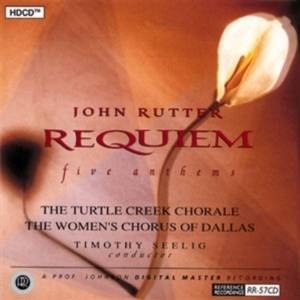 For imaging I like to use Reference Recordings. They image naturally as a 3 dimensional space rather that like an old fashioned View Master where the visual components are almost 2 dimensional objects in a 3D universe. I put on an old audio war horse, the Rutter Requiem (RR-57CD) and I experienced a spatial volume that went in all three dimensions, wide and deep and high. I sensed a deep space going way back with a feeling of height that almost didn’t have a ceiling. And the individual instruments and tones were spaced in a natural manner right to left and front to back, each individual event with a feeling of it’s own 3D volume. I also took advantage again of a moment when my upstairs neighbor was away and cranked up the volume for a few moments to 11 o’clock again with the same result as for the Kissin piece. It only got louder even with this large ensemble Spatial scale and the details and the tonality didn’t change, only the loudness. And even though the last octave of bass was mostly missing even the organ sounded huge. A welcome, unexpected unexpected result from such a small speaker.
For imaging I like to use Reference Recordings. They image naturally as a 3 dimensional space rather that like an old fashioned View Master where the visual components are almost 2 dimensional objects in a 3D universe. I put on an old audio war horse, the Rutter Requiem (RR-57CD) and I experienced a spatial volume that went in all three dimensions, wide and deep and high. I sensed a deep space going way back with a feeling of height that almost didn’t have a ceiling. And the individual instruments and tones were spaced in a natural manner right to left and front to back, each individual event with a feeling of it’s own 3D volume. I also took advantage again of a moment when my upstairs neighbor was away and cranked up the volume for a few moments to 11 o’clock again with the same result as for the Kissin piece. It only got louder even with this large ensemble Spatial scale and the details and the tonality didn’t change, only the loudness. And even though the last octave of bass was mostly missing even the organ sounded huge. A welcome, unexpected unexpected result from such a small speaker.
I don’t like to talk about tonality from a single recording. It’s more a review of the recording rather than the speaker. It’s better to get an over all sense from long term listening of many different recordings. ATC is a British company. But this isn’t a BBC type of reproduction with its well mannered, slightly recessed sound that is almost always sweet. The ATC sound is varies depending on the recording, some times laid back a bit, sometimes a bit forward but never excessively in any case. If it’s playing brass properly recorded it will blare as it should(I always recall Gordon Holt complaining about brass reproduction that was too prim and proper). I get the sense the treble is just the tiniest iota forward of neutral. Just enough to make it sound alive in a way I like.
I think it’s obvious I’m mostly not a rock person (yes I do love the Beatles and Jefferson Airplane and a few others). More importantly, most pop rock recordings don’t appeal to me sonically. But I know there are exceptions and one I’ve found is Beth Hart, Live at Paradiso (Koch Records KDC-CD-9932). And what makes it good is it is a live recording with way less messing with the sound than the usual rock record. And I can also recommend Beth Hart. She writes her own stuff that exposes her deepest feelings(and she’s had a tough life to feed these feelings). I’d compare her presentation to Janis Joplin and she doesn’t suffer from the comparison. Listen to how real Beth’s voice sounds alive on the ATC 19s. And the crowd cheering and clapping(clapping is really hard to reproduce so it doesn’t sound like rain falling) were exceptionally reproduced. And I’m listening to it right now as I type in another room. Boy does it pass the out of room test.
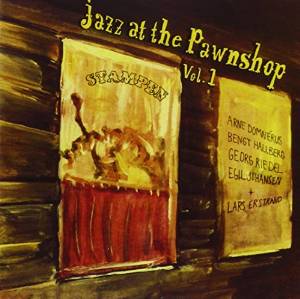 I’ll finish with another wonderful, old, war horse, Jazz at the Pawn Shop (Proprius PRCD 7788). This also has a very natural feel to it but just a bit more forward than Reference Recordings. The ATC 19 does as fine a job in a smaller venue as it does on the bigger Rutter Requiem. And what really impressed me as I listened was a sense of sitting at a table and almost chocking on the smoke, as good a suspension of belief as I can imagine from a recording.
I’ll finish with another wonderful, old, war horse, Jazz at the Pawn Shop (Proprius PRCD 7788). This also has a very natural feel to it but just a bit more forward than Reference Recordings. The ATC 19 does as fine a job in a smaller venue as it does on the bigger Rutter Requiem. And what really impressed me as I listened was a sense of sitting at a table and almost chocking on the smoke, as good a suspension of belief as I can imagine from a recording.
At 85 dB efficiency, the ATC SCM 19 is not as inefficient as the LS3/5a but it’s still on the low side efficiency wise. On the other hand it handles power wonderfully. ATC recommends 75 to 300 watts. That sounds good to me. But I’ll add that I believe it would work best with a really good solid state AB amp with a rating close to the upper recommendation.
This is an excellent speaker with many strong virtues and only nit picking type flaws other than a weak bottom octave that’s weak on the vast majority of speakers, even many large ones. It’s dynamically linear, more than most speakers that are even much larger, and sounds alive on good recordings. Is it perfect? Of course not, but If you like the kind of reproduction I do you should try to audition it and other ATC speakers too. Even if it’s not your style it’s worth a listen to hear what it does so well. Like I said I could live with it very happily and it makes me want to spend extended time with the larger ATC speakers that have even deeper bass and where much of the mid-range is reproduced by the famous ATC three inch dome. I’d expect deeper bass, a bit more lucid mids and even cleaner reproduction of linear dynamics and of high level listening. And then there’s the active ATC speakers to perhaps gild the lily. I suspect that ultimately active cross over, multi-amped speakers, are the right way to go, at least for me.


allen edelstein
Specifications:
Price $4,299.00
Drivers: HF ATC 25mm Neodymium soft dome, Mid/LF ATC 150mm SL
Matched Response: ±0.5dB
Frequency Response (-6dB): 54Hz-22kHz
Dispersion: ±80° Coherent Horizontal, ±10° Coherent Vertical
Sensitivity: 85dB @ 1W @ 1metre
Max SPL: 108dB
Recommended Power Amplifier: 75 to 300 Watts
Nominal Impedance: 8 Ohm
Crossover Frequency: 2.5kHz
Connectors: Binding Posts/4mm Plugs, bi-wire
Cabinet Dimensions (HxWxD): 438x265x300mm (grill adds 28mm to depth)
Weight: 17.8kg
Stereo Times Masthead
Publisher/Founder
Clement Perry
Editor
Dave Thomas
Senior Editors
Frank Alles, Mike Girardi, Russell Lichter, Terry London, Moreno Mitchell, Paul Szabady, Bill Wells, Mike Wright, and Stephen Yan,
Current Contributors
David Abramson, Tim Barrall, Dave Allison, Ron Cook, Lewis Dardick, John Hoffman, Dan Secula, Don Shaulis, Greg Simmons, Eric Teh, Greg Voth, Richard Willie, Ed Van Winkle, Rob Dockery, Richard Doran, and Daveed Turek
Site Management Clement Perry
Ad Designer: Martin Perry






Be the first to comment on: ATC Model SCM 19 loudspeaker